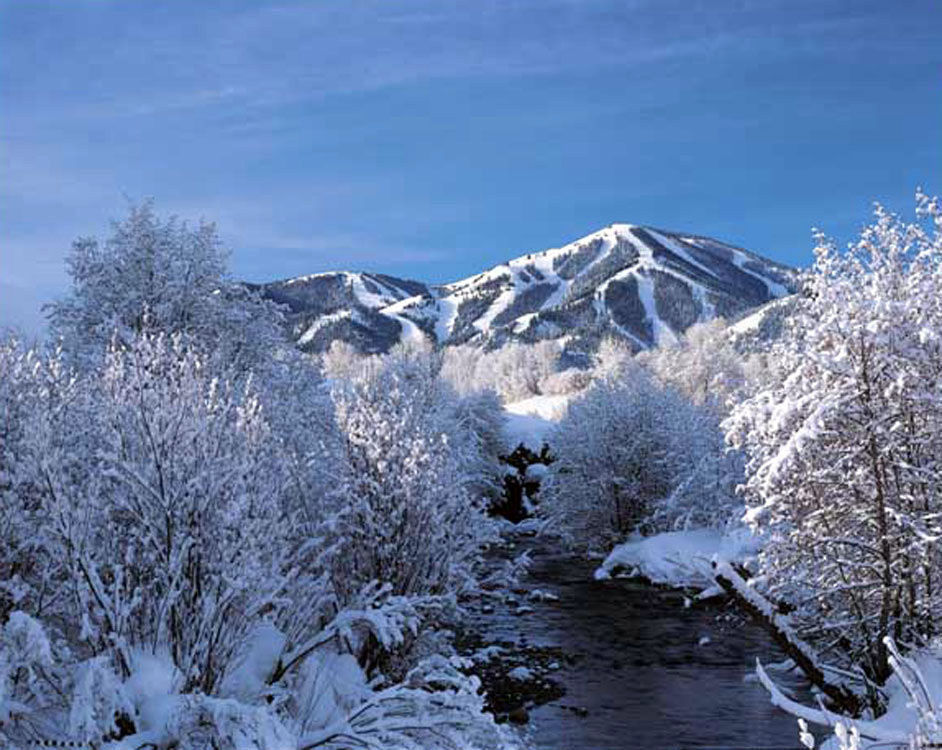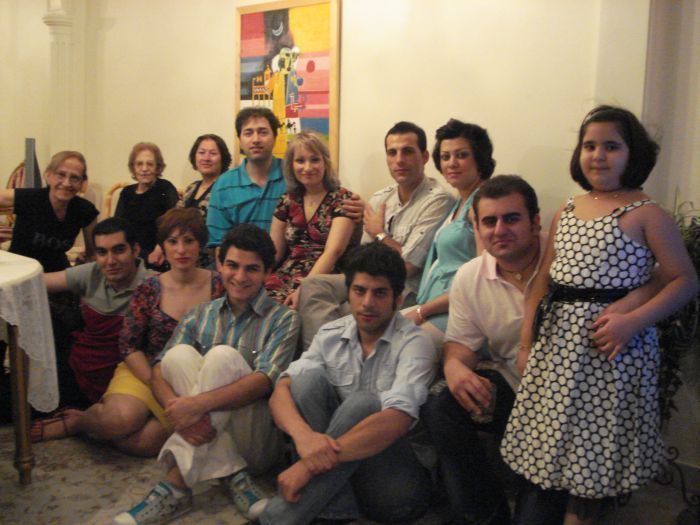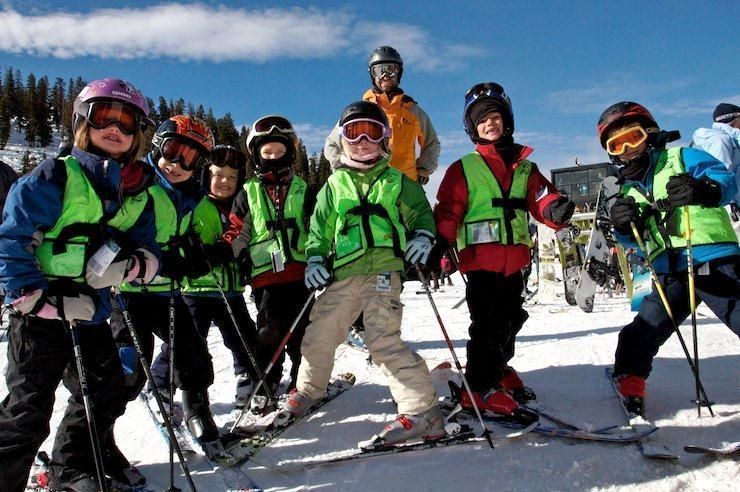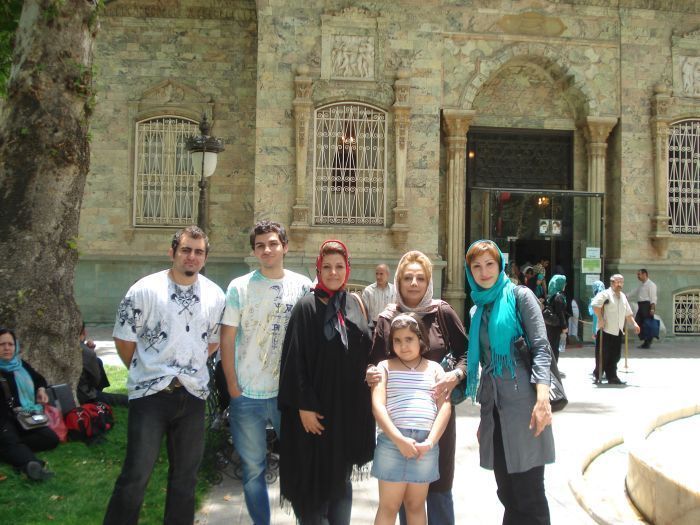January is Learn to Ski Month with many discounts and deals to encourage novices, but this month also includes the ski industry's annual National Safety Awareness Week. Of course, we know common sense safety tips for skiers and riders are valuable all season long.
An estimated 12 million Americans age 7 and up participated in skiing or snowboarding in 2011. According to past surveys by the National Ski Areas Association (NSAA), nationally, 49% of skiers and snowboarders are part of a family with children at home. Of these, 34% were parents with kids who enjoy the sport, and 14% were the kids themselves: snowsports lovers under age 17.
With demographics like that, we know many kids are interested in learning more about these sports, just as we know their parents and grandparents have questions about ski and snowboard safety.
Celebrating Ski Safety & Learning a New Sport
January 19-27, 2013 is National Safety Awareness Week, during which Ski Area Safety Awards are given to resorts that are most effective and creative in communicating "slope safety" messages to visitors. While mountain resorts in New Hampshire might concentrate on poster competitions, some resorts around Lake Tahoe will give Avalanche Awareness clinics where young and old alike learn safety and rescue techniques.
Some resorts will even highlight slope safety by posting Ski Patrol officers with radar guns at busy slope intersections to monitor the speed of those skiing and snowboarding.
All month long, mountain resorts bundle in their safety message with lift ticket and lodging discounts, special events, kids' competitions and family activities that promote learn to ski as well. January is when families will find mountain ambassadors at strategic trail intersections to assist guests, celebrity athletes visiting terrain parks, and top quality loaner equipment with helmets. Many also offer discounted lift tickets, run ski and ride equipment sales for guests, and invite representatives from safety and injury protection companies to demonstrate the latest gear.
Snowsports Safety is Important All Season Long
Did you know that, fortunately, the majority of all ski and snowboard injuries are minor? According to the Loyola University Medical Center Injury Prevention Program, approximately half of all snowsports injuries involve a stationary object (i.e. trees). In fact, says NSAA, there were only about 2.6 fatalities and serious injuries per 1 million skier/rider visits in 2011-12.
But the 2009 death of actress Natasha Richardson from a head injury during a Mont-Tremblant ski class shone a spotlight on critical snowsports injuries,especially head injuries.
Snowsports Helmet Awareness
Just a few years ago, top resorts such as Aspen/Snowmass, a leader in children's ski and ride programs, decided to require helmets on all students under 12-years-old. What a sensation that caused. The winds have changed and helmet usage has almost become fashionable. A recent NSAA survey found that more than 67% of guests at their member resorts wore helmets during the 2011/2012 season and, more than 80% of those age 12 and younger.
According to their studies, helmet use is critical to safety. Helmets are designed to reduce the severity of head injuries, but they are most effective at providing protection at speeds of 12 mph or slower. If you hit a tree, object or another skier at moderate or high speed, a helmet may not prevent or reduce a serious injury.
There is widespread availability of rental helmets, an almost unheard of option only a few years ago. The Ski Helmet Safety website is a great resource, but parents should remember that no helmet will totally protect those moving faster than about 12mph.
A Simple Message for Terrain Park Skiers & Riders
Encouraging general safety awareness by changing behaviors is the idea behind the formation of the "heads up" campaign, an industry-wide safety program led by the NSAA. The campaign urges skiers to act responsibly and sometimes penalizes those who fail to follow safety rules.
Although most ski injuries can be attributed to skier error — not equipment failure — we were surprised to learn that the death rate of snowboarders, while statistically very small, is 40% lower than that of alpine skiers. In fact, snowboarders are more likely to be hit by out-of-control skiers than the other way around. Snowboarders get their own safety messages at terrain parks thanks to Smart Style, a safety initiative in North America from the NSAA and Burton Boards that is promoted by video.
Smart Style promotes that riders fully understand the feature and the prevailing conditions before attempting any maneuver. This means that persons using freestyle terrain need to examine all features before use and satisfy themselves that they have the knowledge, skills and ability to attempt the feature. Their tips:
- Make a Plan: Every time you use freestyle terrain, make a plan for each feature you want to use. Your speed, approach and take off will directly affect your maneuver and landing.
- Look Before You Leap: Scope around the jumps first, not over them. Know your landings are clear and clear yourself out of the landing area.
- Easy Style It: Start small and work your way up. (Inverted aerials not recommended).
- Respect Gets Respect: From the lift line through the park.
Alpine Responsibility Code for Downill Skiing & Riding
The more comprehensive Alpine Responsibility Code (below) is the long time standard in this field, and still a valuable behavior guide all throughout the ski season. At some resorts, its 11 principles are painted on individual chairlift support poles so that everyone relaxing on their way back uphill will have plenty of time to get the message. In the ever-evolving snowsports industry, you'll see this message repeated in any number of engaging ways in a ongoing effort to make the sport safer.
Regardless of how you enjoy your snow sport, always show courtesy to others and be aware that there are inherent risks in all snow recreational activities that common sense and personal awareness can reduce. These risks include rapid changes in the weather, visibility and surface conditions, as well as natural and artificial hazards such as, rocks, trees, stumps, vehicles, lift towers, snow fences and snowmaking equipment.
Observe the Alpine Responsibility Code and share it with others:
- Know your ability and always stay in control and be able to stop and avoid other people or objects.
- It is your responsibility to stay in control on the ground and in the air.
- Take lessons from qualified professional instructors, to learn and progress.
- As you proceed downhill or overtake another person, you must avoid the people below and beside you.
- Do not stop where you obstruct a trail or run, or are not visible from above.
- When entering a trail or run or starting downhill, look uphill and give way to others.
- When riding chairlifts always use the restraining devices. Always use suitable restraints to avoid runaway skiing/boarding equipment. Ensure your equipment is in good condition.
- Observe and obey all signs and warnings. Keep off closed trails or runs and out of closed areas.
- Before using any lift you must have the knowledge and ability to load, ride and unload safety.
- Do not ski, board, ride a lift or undertake any other alpine activity if your ability is impaired by drugs or alcohol.
- If you are involved in, or witness an accident or collision, alert Ski Patrol, remain at the scene and identify yourself to the Ski Patrol.
A Parents Responsibility – Code or No Code
Keep in mind that many ski safety groups feel that sending a message isn't enough to ensure safety, especially among younger snowsports enthusiasts.
Which leaves parents in the position they're usually in, hoping to educate their kids enough so that they can learn to be responsible for themselves. With these thoughts in mind, it's time to hit the slopes!
Dear Reader: This page may contain affiliate links which may earn a commission if you click through and make a purchase. Our independent journalism is not influenced by any advertiser or commercial initiative unless it is clearly marked as sponsored content. As travel products change, please be sure to reconfirm all details and stay up to date with current events to ensure a safe and successful trip.




i think many accidents occur when new teen or young men (and sometimes women) who are not very experienced are out with their much-more experienced pals. They get talked into trying a part of the mountain that is too much for them and then they try to keep up. They get themselves into trouble that way and often are injured.